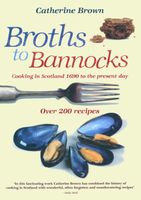Advertisement
Turnips
Published 1990
The yellow swede (Brassica campestris) is the Scottish turnip; it has a nutty sweetness, but is not as sweet as the carrot. The two are inseparable in traditional Scottish broths. The smaller white turnip (Brassica kapa) is not so common in broths though it may be used in a spring vegetable broth for its light aromatic, peppery flavour. There is a thick fibrous layer on the Scottish turnip which must be thoroughly removed before cooking. Medium-sized young and mature turnips have the best flavour, large old ones should be avoided, as they are not only coarse in texture, but their flavour is gone. Scottish yellow turnip has traces of all essential vitamins but is also high in potassium, calcium, phosphorous, vitamin C and vitamin A.


